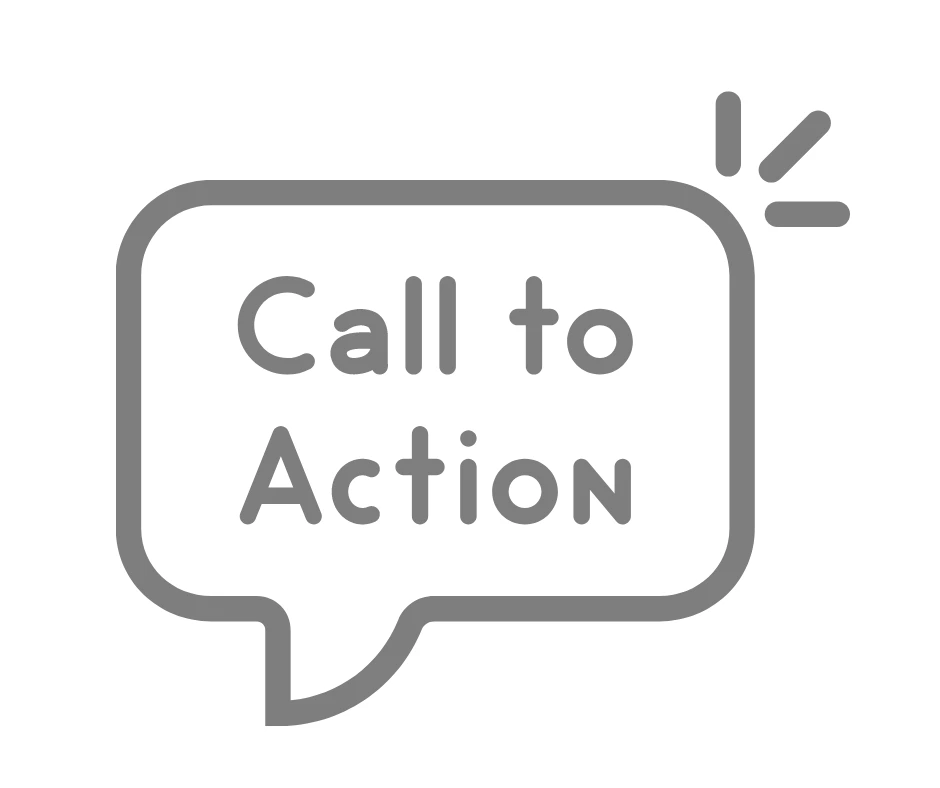How to Utilize Text Messaging for Nonprofits

What is Nonprofit Text Messaging?
Nonprofit text messaging is a powerful tool for organizations to connect and engage with their supporters using mobile phones. It is a form of communication that enables nonprofits to reach a wide audience quickly and efficiently, making it an essential component of any successful marketing strategy.
Why Nonprofits Should Be Using Mass Texting
Firstly, mass texting provides a quick and direct means of communication with supporters. With most people having access to a mobile phone, nonprofits can easily reach many potential donors within seconds. Unlike traditional forms of communication like direct mail or phone calls, text messages are more likely to be read and responded to promptly. This ensures that important updates, upcoming events, and fundraising initiatives reach their intended audience promptly.
Moreover, mass texting allows nonprofits to personalize their messages and send custom messages to specific groups or individuals. By tailoring their communications, nonprofits can create a stronger connection with their supporters and make them feel valued and appreciated. Personalized messages enable organizations to highlight the impact of their work and evoke an emotional response from potential donors, which can significantly increase their likelihood of contributing to the cause.
Another key advantage of mass texting is the opportunity for two-way communication. Nonprofits can encourage supporters to engage with them by allowing them to respond to messages with comments, inquiries, or even volunteer opportunities. This real-time interaction helps to build a rapport between the organization and its supporters and fosters a sense of trust and transparency. By actively listening and responding to the needs and concerns of their audience, nonprofits can strengthen their relationships and encourage long-term engagement.
In conclusion, mass texting is essential for nonprofits seeking to enhance communication strategies and effectively engage with their supporters. By utilizing this medium, nonprofits can achieve higher open and response rates, personalize their messages, foster two-way communication, and streamline their outreach efforts. With the help of a mass texting service, nonprofits can create impactful messaging campaigns and ultimately make a greater impact on their cause.
Include one call to action per message.
Including one call to action per message is a crucial strategy for nonprofits utilizing mass texting campaigns. With limited space and attention spans, it's important to be concise and direct in your communication. Focusing on one specific call to action increases the chances of getting a response or engagement from your supporters.
A call to action is a clear and compelling statement that prompts the recipient to take a desired action. For nonprofits, this can be anything from donating, signing up for a volunteer opportunity, attending an event, or sharing a post on social media. Narrowing down your messaging to one specific action eliminates confusion and makes it easier for your audience to follow through.
When crafting your call to action, it's important to make it compelling and urgent. Use action-oriented language and create a sense of urgency by emphasizing the impact or deadline associated with the action. For example, instead of saying, "Consider donating," you can say, "Donate today to provide clean water to families in need."
In addition, provide a clear and easy way for your supporters to take action. This can be a link to a donation page, a sign-up form, or a reply option to express interest. Make sure your call to action is easily accessible and user-friendly, as any obstacles or complications may deter potential donors or volunteers.
In conclusion, including one call to action per message is a powerful strategy for nonprofit text messaging campaigns. Focusing on a single action and making it compelling and urgent increases your audience's chances of getting a positive response. Remember to provide clear instructions and make the action easily accessible. You can continuously improve and optimize your messaging strategies for greater success by tracking and measuring the effectiveness of your calls to action.
Use eye-catching images.
Using eye-catching images is an effective way to capture your audience's attention and make your messaging more engaging. In the context of text messaging for nonprofits, incorporating visually appealing images can help convey the mission and impact of your organization compellingly.
Choosing visuals that align with your nonprofit's brand and messaging is important when selecting images. Whether it's a photo of a volunteer in action, a heartwarming image showcasing the beneficiaries of your services, or a powerful visual representing the cause you're advocating for, make sure it resonates with your audience and effectively communicates your message.
Eye-catching images can be particularly impactful when used with your call to action. For instance, if you're promoting a fundraising event, include a captivating photo that highlights the excitement and positive atmosphere of the event. This can entice potential donors to take action and attend the event.
Remember the limitations of mobile devices when using images in your text messages. Optimize your images for mobile viewing by ensuring they are properly sized and compressed to avoid slowing down the loading time of your messages. Additionally, use alt text to briefly describe the image for individuals who may have images disabled or are visually impaired.
In conclusion, incorporating eye-catching images in your text messaging for nonprofits can significantly enhance the effectiveness of your messaging. Visuals can evoke emotions, capture attention, and inspire action. So, strategically select and utilize captivating images to support your nonprofit's mission and engage your supporters.
Avoid over-communication
When utilizing text messaging for nonprofits, it's important to balance staying connected with your supporters and avoiding over-communicating. While keeping your donors and volunteers informed about upcoming events, fundraising efforts, and volunteer opportunities is essential, bombarding them with too many messages can lead to frustration and decreased engagement.
Over-communication can make your messages feel intrusive and overwhelming, causing recipients to ignore or unsubscribe from your text messaging service. Establish a frequency that works for your audience and respects their preferences to prevent this. Sending texts too frequently can result in message fatigue and diminish the impact of your communication.
One way to avoid over-communication is to segment your contact lists. Divide your supporters into categories based on their interests, engagement levels, or donation history. This way, you can send targeted messages to specific groups rather than bombarding everyone with the same content. For example, suppose you have a group of donors who primarily contribute to particular fundraising campaigns. You can send them updates and progress reports on those campaigns without overwhelming your donor base.
Another strategy to avoid over-communication is to prioritize quality over quantity. Instead of sending multiple messages every day, focus on delivering valuable and meaningful content. Craft personalized messages that demonstrate gratitude, provide updates on the impact of donations, or share compelling stories about the beneficiaries of your nonprofit's services. By delivering high-quality messages, you can make each communication count and increase the likelihood of your supporters actively engaging with your organization.
To ensure you're not over-communicating, listening to your audience is crucial. Pay attention to their responses and feedback. If you notice a decrease in engagement or an increase in opt-outs, it may be a sign that you need to adjust your communication frequency or content. Regularly review your analytics and response rates to gauge the effectiveness of your text messaging campaigns and make data-informed decisions.
In conclusion, while text messaging can be a powerful tool for nonprofits, avoiding over-communication is important. Strike a balance between staying connected with your supporters and respecting their preferences. Segment your contact lists, prioritize quality over quantity, diversify your communication channels, and listen to your audience's feedback. By implementing these strategies, you can effectively harness the power of text messaging while maintaining a positive relationship with your supporters.
Ensure Your Website and Donation Forms are Responsive
When utilizing text messaging for nonprofits, you must ensure that your website and donation forms are responsive. In today's digital era, mobile phones are the primary devices through which people access the internet. Therefore, your website and donation forms must be optimized for mobile devices.
A responsive website adapts to different screen sizes, providing a seamless browsing experience across devices. This means that whether someone is accessing your website on a desktop computer, a tablet, or a mobile phone, they should be able to navigate and interact with your site without any difficulties. A responsive website provides a better user experience and improves your organization's online visibility and search engine rankings.
Regarding donation forms, it's equally important to ensure they are responsive. Potential donors who receive text messages about fundraising events may want to contribute immediately, and it's crucial that they can easily access and complete the donation form on their mobile devices. A responsive donation form will automatically adjust to fit the screen size, making it easier for donors to fill out the required information and complete their contributions.
To ensure your website and donation forms are responsive, consider the following tips:
1. Choose a mobile-friendly website theme: Select a mobile-friendly and responsive theme when designing or updating your website. Many website builders and content management systems offer responsive templates that you can customize to fit your nonprofit's branding.
2. Optimize images and media: Large images and media files can slow down your website's loading speed on mobile devices. Compress and optimize images to reduce file size and improve page load times.
3. Simplify navigation: Screen space on mobile devices is limited, so simplify your website's navigation menu to make it accessible and user-friendly on smaller screens. Use clear labels and organize your content in a way that is easy to navigate with minimal scrolling.
4. Test your website and forms on multiple devices: Regularly test your website and donation forms on various devices to ensure they perform well and look good on different screen sizes. This will help identify any issues or inconsistencies that need to be addressed.
5. Streamline your forms: Keep your donation forms short and straightforward. Minimize the number of fields to fill out and only ask for essential information. This will make it easier and quicker for donors to complete the form, increasing the likelihood of conversion.
By ensuring your website and donation forms are responsive, you provide a positive user experience for your supporters, making it easier for them to engage with your organization and contribute to your fundraising efforts. Don't miss out on potential donations by neglecting the importance of mobile optimization in today's mobile-centric world.
Personalize your text messages.
Personalizing your text messages is a powerful strategy for nonprofit organizations to connect with their audience more personally. While mass messaging campaigns can be effective in reaching a large number of people, personalized messages have the potential to create a deeper impact and increase engagement. Here are some tips on how to personalize your text messages for your nonprofit:
1. Segment your contact lists: One of the first steps to personalizing your text messages is segmenting your contact lists. Divide your audience into groups based on their interests, donation history, or engagement level. This allows you to tailor your messages to specific subsets of your audience, increasing the relevance of your content.
2. Use recipient's name: Addressing your recipients by their name creates a sense of individual connection and makes your messages feel more personal. Most text messaging platforms offer the option to input the recipient's name into the message automatically, so take advantage of this feature to make your messages stand out.
3. Reference previous interactions: If a recipient has previously donated, volunteered, or attended an event, reference that specific interaction in your text message. For example, "Thank you for your generous contribution last year. We appreciate your continued support." This shows that you are aware of their past involvement and reinforces their importance to your organization.
4. Provide relevant content: Personalization also means sending messages relevant to the recipient's interests. If a donor has expressed interest in a particular cause or program, send them updates and opportunities related to that area. By providing content that aligns with their preferences, you demonstrate that you value their interests and are paying attention to their needs.
5. Add a personal touch: Beyond using names and referencing past interactions, consider adding a personal touch to your messages. This could be a brief handwritten note attached to a bulk message or a sincere thank you message after a donor's contribution. These small gestures make your recipients feel valued and appreciated, fostering stronger relationships with your audience.
6. Use two-way messaging: Two-way messaging is a valuable tool for personalization. It allows recipients to respond to your messages and engage in a conversation with your organization. Encourage recipients to reply with any questions, feedback, or concerns they might have. This makes them feel heard and opens up further communication and relationship-building opportunities.
Personalizing your text messages humanizes your nonprofit organization, making it more relatable and engaging. By segmenting your contact lists, using recipient names, referencing previous interactions, providing relevant content, adding a personal touch, and utilizing two-way messaging, you can create a more meaningful connection with your supporters and increase the effectiveness of your messages. Personalization is key to cultivating strong relationships and driving greater engagement with your nonprofit's mission.
Conclusion
In conclusion, text messaging is a powerful tool that nonprofits should not overlook in their efforts to connect with supporters, raise awareness, and drive action. With its high open rates and instant delivery, text messaging offers a direct and effective way to engage with donors, volunteers, and the community at large.
By utilizing text messaging, nonprofits can deliver timely updates, send donation appeals, and mobilize supporters for events and campaigns. Furthermore, text messaging allows for personalized and interactive communication, fostering a sense of connection and involvement. Nonprofits that embrace text messaging as part of their communication strategy will enhance their reach and impact and cultivate stronger relationships with their stakeholders. With the potential to drive meaningful engagement and support, text messaging is a valuable tool that nonprofits should embrace and leverage to further their missions and create positive change.
Fundraising  Your All-in-One Event Management Platform
Your All-in-One Event Management Platform
Host Events with Ease! Events.org's comprehensive event management platform makes it easy to optimize, automate and maximize your organization's entire charitable event calendar.Events.org Benefits:
✓ Simple, Affordable Pricing for Paid Events: $1 per Transaction!
✓ FREE Events are always FREE
✓ Host & Manage Any Event
✓ Dedicated Customer Support
✓ Branded Event & Donation Pages
✓ Donor and Contacts Management (CRM)
✓ Membership Management
✓ Conference Management
✓ Volunteer Management
BONUS: Free access to the iBid's Mobile Auction AutoPilot™ - This automation tool saves you time & stress while streamlining auction tasks. Manage auction items and payment processing, including express checkout & digital receipts!




